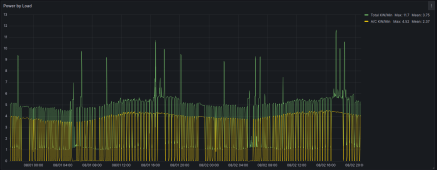Hello,
I have no experience, and my only knowledge of solar is watching some videos. And found this forum which seems like there are many very helpful people here.
I am currently in the process of building a large garage (2,000SF) in which I will have a full bathroom and I plan on conditioning a portion of it for temporary living while I build a small house for my family.
With that said I will also need enough power for the house as well in the future. I am very open to suggestions on how to accomplish all this but I will explain what I would like to do.
I am hoping to have at least 100 amps for the garage and run a 200 amp sub panel to the house once it is built. The garage will be where the inverters and batteries are located.
Few questions:
I have no experience, and my only knowledge of solar is watching some videos. And found this forum which seems like there are many very helpful people here.
I am currently in the process of building a large garage (2,000SF) in which I will have a full bathroom and I plan on conditioning a portion of it for temporary living while I build a small house for my family.
With that said I will also need enough power for the house as well in the future. I am very open to suggestions on how to accomplish all this but I will explain what I would like to do.
I am hoping to have at least 100 amps for the garage and run a 200 amp sub panel to the house once it is built. The garage will be where the inverters and batteries are located.
Few questions:
- Is it possible to produce 300-400amps of power by a fully off grid system?
- If so, is it feasible on a reasonable budget?
- What are some good first steps to achieving what I am looking for?



